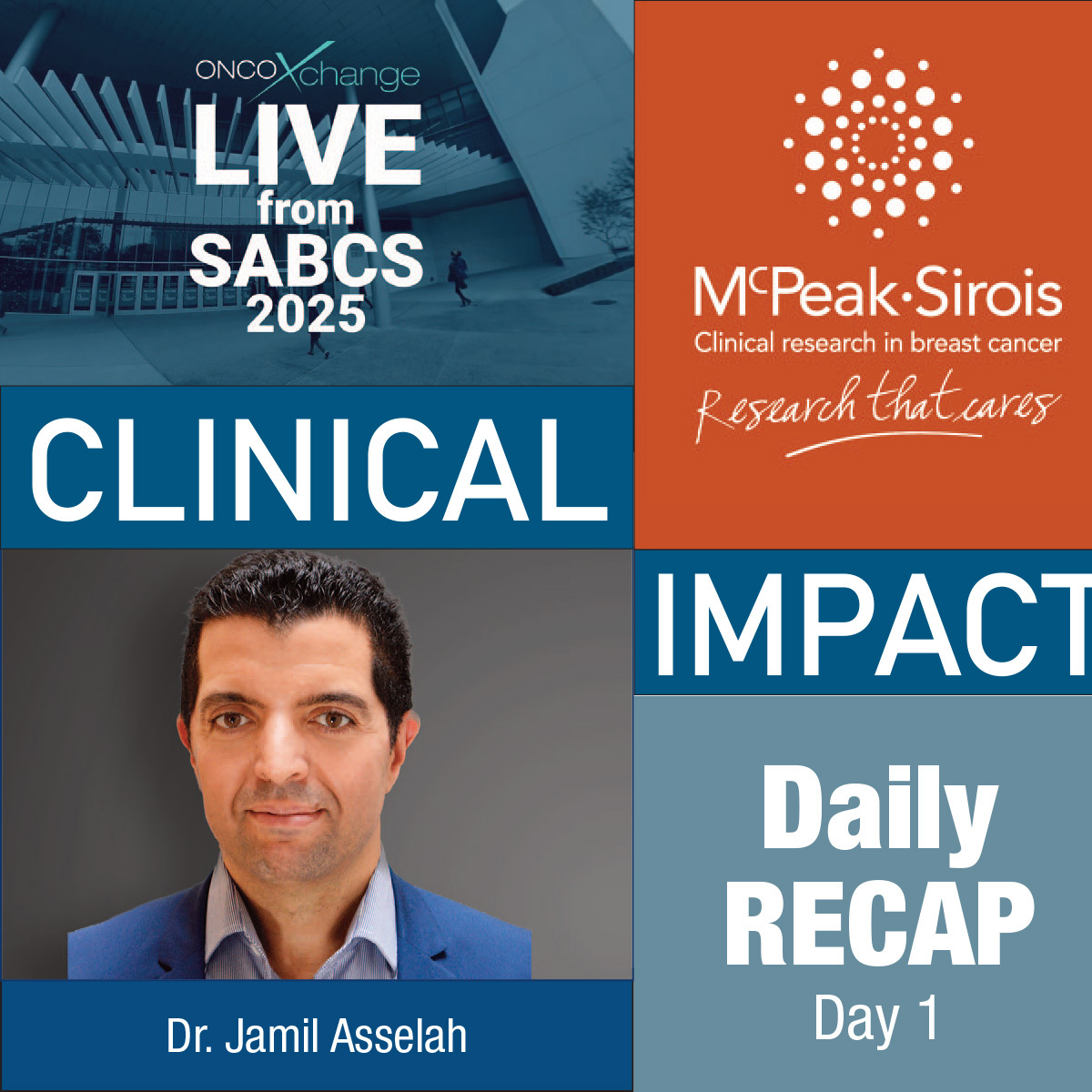
SABCS 2020 - Immunotherapy knowledge in breast cancer is evolving
December 2020
By Wayne Kuznar for oncoXchange
New frontiers in inducing and maintaining an effective antitumor immune response in breast cancer were highlighted during a special session at the virtual 2020 San Antonio Breast Cancer Symposium.
Biomarkers in immune therapy response was addressed by Lajos Pusztai, MD, Director, Breast Cancer Translational Research, Yale Cancer Center, New Haven, Ct. He drew from research in the context of clinical trials.
In the neoadjuvant setting, a selectively predictive biomarker has yet to be identified that can define a subpopulation that preferentially benefits from adding immunotherapy to chemotherapy.
Even though PD-L1 on immune cells positively identifies cancers with higher rates of pathologic complete response (pCR) with chemotherapy plus immunotherapy, immune-oncology agents also improve the pCR rate compared with chemotherapy alone in patients without PD-L1 expression on immunohistochemistry.
In the neoadjuvant setting, a subset of patients stratified into a MammaPrint ultra high (MP2) risk group in the I-SPY 2 trial seemed to benefit selectively from adding immunotherapy to chemotherapy, with an increased rate of pCR.
The different clinical importance and predictive function of PD-L1 positivity in the primary versus metastatic treatment settings is likely due to the different immune microenvironment and “immune fitness” between primary tumors and metastases.
In the metastatic setting, PD-L1 positivity on immunohistochemistry is required for benefit from pembrolizumab, atezolizumab, and durvalumab.
Both high tumor burden and microsatellite unstable/mismatch repair deficient-deficient status are tissue agnostic indications for single-agent immune checkpoint therapy. Patients with CD274 copy number gain or amplification seems to selectively benefit from durvalumab maintenance therapy.
Myeloid cells, including monocytes (macrophages) and neutrophils, are important constituents of an immunosuppressive microenvironment in breast tumors, said Xiang Zhang, MD, Baylor College of Medicine, Houston.
“Therapeutic strategies have been investigated to deplete, block, deactivate, or reprogram myeloid cells,” he said.
Chemotherapy (cyclophosphamide, anthracyclines, carboplatin, docetaxel) has off-target effects that may reduce the proportion of immunosuppressive myeloid cells in the tumor microenvironment, making them effective partners with immunotherapy.
Blocking recruitment of immunosuppressive myeloid cells such as CCXR2 with AZD5069 and SX-682 is being studied in phase I/II clinical trials of leukemia, pancreatic cancer, melanoma, and prostate cancer, while blocking CCR2 is also being tested in phase I/II trials in head and neck, lung, and pancreatic cancers, as well as in melanoma and other advanced solid cancers. Depletion of CCR2 and CSF1R cells with monoclonal antibodies is another strategy under study.
Epigenomic reprogramming refers to converting M2 (pro-tumor) macrophages to M1 (antitumor) macrophages to potentially facilitate immunotherapy. HDAC inhibition (ie, entinostat) has been studied successfully in this respect.
Toxicity is one challenge in indiscriminately targeting myeloid cells, which are found in macrophages in tissues outside of tumors, said Zhang.
Myeloid cell heterogeneity within tumors is another challenge, which can explain differential responses to treatments targeting CSFR1 so far. The third challenge is mutual interaction between the cell types, with rebound compensation in the number of neutrophils observed with macrophage depletion, for example.
Immune checkpoint inhibitor monotherapy has activity in a minority of patients with advanced breast cancer, and no benefit in patients with PD-L1-negative tumors at baseline, providing the rationale for combination immunotherapies in this setting. Combinations will be needed to induce and maintain an effective antitumor immune response, said Sherene Loi, MD, PhD, professor of cancer therapeutics, Peter MacCallum Cancer Centre, Melbourne, Australia.
Three potential additions to immunotherapy are the use MEK inhibitors, radiotherapy, and tucatinib.
In murine models of breast cancer, the MEK inhibitor trametinib increased levels of PD-L1 and the presence of class I and class II MHC on tumors, resulting in tumor regression. In the phase II COLET study, the addition of cobimetinib to atezolizumab and nab-paclitaxel in patients with locally advanced or metastatic triple negative breast cancer. Objective responses were observed in patients with PD-L1-negative and PD-L1-positive tumors but progression-free survival did not seem to be affected, and therefore this triplet was discontinued for future development for this indication. Further experiments demonstrated that MEK inhibition was detrimental to circulating and intratumoral T cell proliferation, frequency, and function. This effect could be ameliorated to some extent with the addition of a T cell agonist, said Loi.
Radiotherapy has been shown to convert a non-inflamed tumor microenvironment to one that is inflamed, through induction of dendritic cell death and increasing the immunogenicity of tumors (upregulation of MHC class I)
In the presence of oligometastatic breast cancer, the BOSTON II pilot study tested radiotherapy given before 8 cycles of pembrolizumab, and “to our surprise, with nearly 5 years of follow-up, 60% of these patients remained progression-free,” she said. A correlator of response was a high levels of peripheral blood CD8+ PD-1+ T cells. Compared with non-responders, expanded levels of and greater increases in peripheral blood clonotypes were also observed non-responders, all of whom were PD-L1-negative at baseline.
HER2 oncogenic signaling creates an immunosuppressive tumor microenvironment that promotes tumorigenesis.
Evidence suggests that tucatinib, a potent inhibitor of HER2 signaling, can induce increases in CD8+ T cells in the tumor microenvironment in a trastuzumab-sensitive mouse model. Tucatainib-treated mice also had a high level of immune infiltration and cytokine production, suggesting that tucatinib can have favorable effects on the tumor microenvironment.

Comments (0)